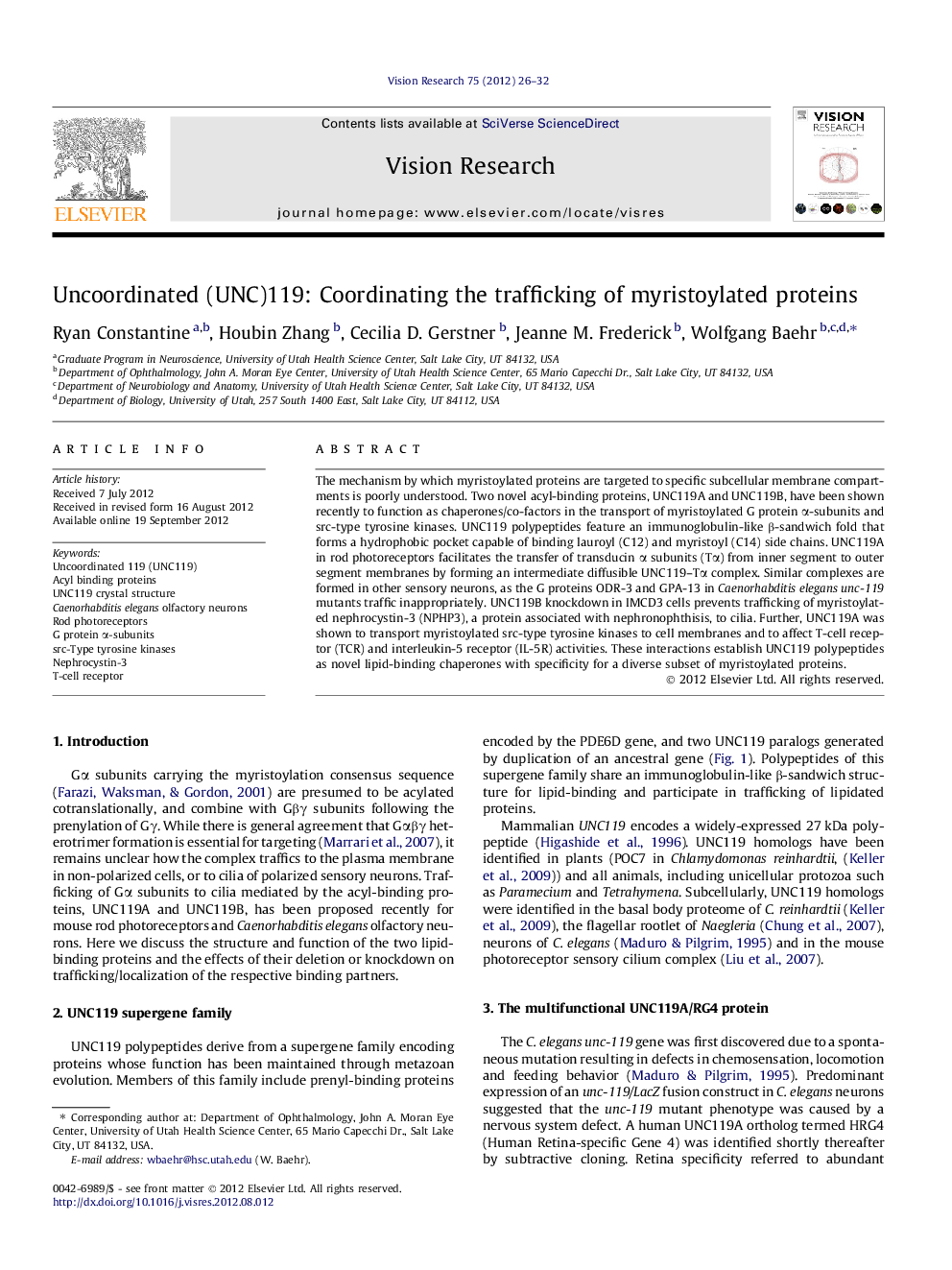| Article ID | Journal | Published Year | Pages | File Type |
|---|---|---|---|---|
| 4033866 | Vision Research | 2012 | 7 Pages |
The mechanism by which myristoylated proteins are targeted to specific subcellular membrane compartments is poorly understood. Two novel acyl-binding proteins, UNC119A and UNC119B, have been shown recently to function as chaperones/co-factors in the transport of myristoylated G protein α-subunits and src-type tyrosine kinases. UNC119 polypeptides feature an immunoglobulin-like β-sandwich fold that forms a hydrophobic pocket capable of binding lauroyl (C12) and myristoyl (C14) side chains. UNC119A in rod photoreceptors facilitates the transfer of transducin α subunits (Tα) from inner segment to outer segment membranes by forming an intermediate diffusible UNC119–Tα complex. Similar complexes are formed in other sensory neurons, as the G proteins ODR-3 and GPA-13 in Caenorhabditis elegans unc-119 mutants traffic inappropriately. UNC119B knockdown in IMCD3 cells prevents trafficking of myristoylated nephrocystin-3 (NPHP3), a protein associated with nephronophthisis, to cilia. Further, UNC119A was shown to transport myristoylated src-type tyrosine kinases to cell membranes and to affect T-cell receptor (TCR) and interleukin-5 receptor (IL-5R) activities. These interactions establish UNC119 polypeptides as novel lipid-binding chaperones with specificity for a diverse subset of myristoylated proteins.
► UNC119 polypeptides are multifunctional proteins and part of a supergene family. ► UNC119A interacts with a subset of acylated G protein α-subunits. ► UNC119A affects trafficking of transducin in rod photoreceptors. ► UNC119A interacts with src-type tyrosine kinases through SH2 and SH3 interacting domains. ► UNC119B traffics NPHP3 to cilia in IMCD3 cells.
